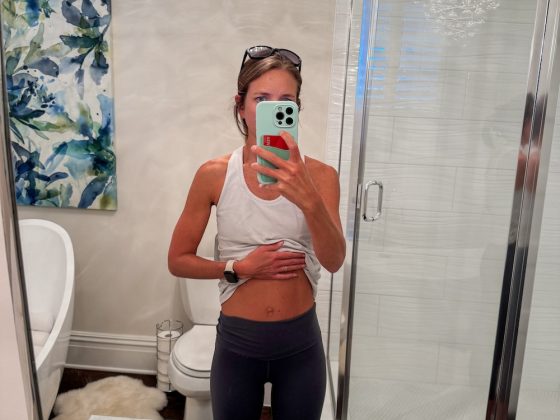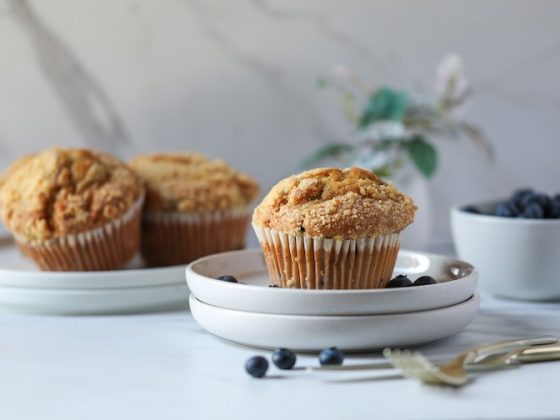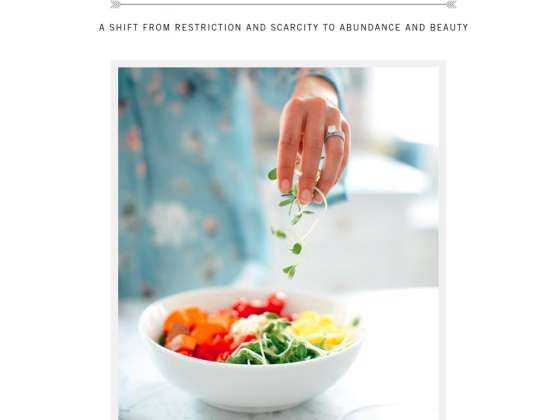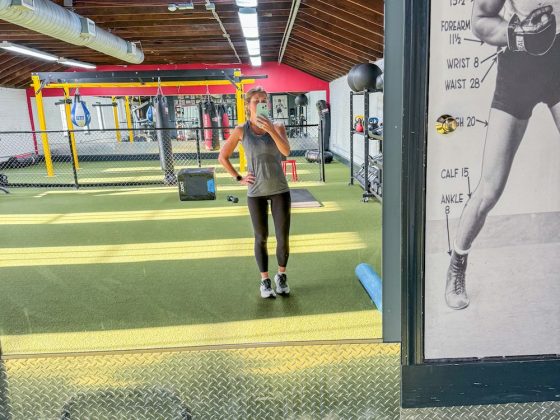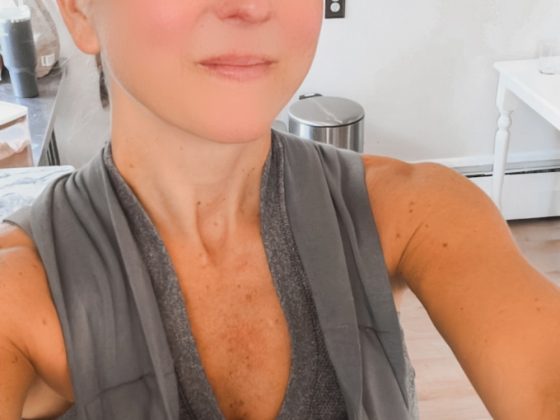Since delving into the world of holistic wellness, I have been intrigued by dry brushing, yet never added it to my self-care routine. So when I saw a dry brush sitting on a display table during an acupuncture session, I asked about it. Jelena Nikolajevic, owner and founder of Boketto Wellness in Richmond, VA, encourages dry brushing at least a few times a week, if not every day. “Dry brushing is beneficial for the lymphatic system, which is then really beneficial for the immune system. When you move the lymphatic system, you’re moving blood, you’re moving fluid. This is all very important when it comes to our health. It’s also very good for water retention,” she says.
Water retention and puffiness is something I feel like I struggle with, so I began to think it might be a good practice for me to incorporate. I had also been learning a little bit more about the benefits of lymphatic drainage; lymphatic massage with a professionally-trained masseuse can help, but dry brushing at home is something to add to your daily self-care routine to reap similar rewards.
Long story short, I ended up buying both an ionic dry brush for my body, and a smaller, softer dry brush for my face. Given that it was new to me, I started with a “habit stack” and dry brush right before getting in the shower. But since the hour I shower really depends on the day, I can’t help but wonder if there is a better time – and more intentional method – to dry brushing consistently. I also love to understand “the why” behind certain self-care behaviors, and since I wasn’t completely clear on how dry brushing was benefiting me, I decided to look into it further. Here is what I found.
What is dry brushing?
“Dry brushing is a traditional skincare technique that uses a brush with natural bristles to gently exfoliate the skin surface without using water or exfoliating creams. This technique typically focuses on brushing dry skin in specific patterns before showering,” explains Dr. Rekha Singh, an MD in Dermatology, Venereology and Leprology at Oliva Skin & Hair Clinic. Ensuring the ritual is performed on dry skin with gentle movements towards the heart are key components of dry brushing. What is more motivating for me to maintain the habit however, is that while it is considered a topical skin care technique, the benefits go beyond the surface of the skin.
The history of dry brushing
Although the scientific research on dry brushing is limited, the wellness ritual is believed to have an ancient past. “[Dry brushing] is thought to have originated in ancient Ayurvedic practices, which have roots in India dating back thousands of years. Ayurveda, India’s traditional system of medicine, emphasizes holistic healing and wellness,” says Brie Cure, owner of Brie Cure Aesthetics in New Orleans, LA. Other theories attribute its origination to other ancient cultures. According to Rachel Lozina, Master Esthetician and Founder of Blue Water Spa in Oyster Bay, NY, “dry brushing [dates] all the way back to the Egyptians. It was said that Cleopatra used a dry brush to give her her glowing skin…Numerous other societies such as ancient Greeks, ancient Romans and Scandinavians have all been known to use the same technique.” Wherever it originated, it has withstood the test of time for good reason.
The benefits of dry brushing
Exfoliation and anti-aging skincare
Given that the skincare technique is performed on dry skin with a bristled brush, it makes sense that surface-level exfoliation is the most commonly perceived benefit. Aesthetically speaking, the ritual leads to both short-term and long-term results with regards to appearance and anti-aging effects. “I highly recommend dry brushing as an easy way to make your whole body look and feel younger by exfoliating dead skin cells and stimulating blood flow. Dry brushing allows you to tackle the often-neglected areas of skincare like our legs, neck, and hands. [It] helps with the tone and texture of your skin,” explains Gerontologist and Healthy Aging Coach, Darnell Cox.
Lymphatic drainage
Dry brushing is a technique that supports our lymphatic system and encourages lymphatic drainage, which is crucial for our overall health. “Our lymphatic system and immune system go hand-in-hand,” Jelena Nikolajevic explains. “If there’s stagnation in the lymphatic system, then your immune system can be affected. I often see with people who are chronically sick, they are just not moving their lymphatic system.” The lymphatic system – and its connection to other important functions of the body – is often underappreciated, but its health has implications for our circulation, immunity, and metabolism. Lymph is a clear fluid that contains both white blood cells and waste products. The over-accumulation of this fluid in the body can lead to inflammation and disease. Therefore, one of the major roles of the lymphatic system is to facilitate our immune system by moving this fluid, transporting pathogens, eliminating toxins, and enhancing the body’s defenses. Unlike our circulatory system, the cells and fluid of the lymphatic system move in one direction.
The skin’s lymphatic system is primarily responsible for maintaining fluid balance and removing toxins and waste from the body. Because the skin separates the internal environment from the external, it acts as a barrier and plays a big role in the lymphatic system’s filtration process. Dry brushing helps to ensure this important system is working optimally. Not only does this help with long-term health and disease prevention, but also with water retention, swelling, and puffiness in the near term.
Breast health
Piggybacking off of the above, the benefits of dry brushing for the lymphatic system have positive implications for breast health. “[When I dry brush], especially being a woman, I particularly love to focus on moving the lymph around the breast tissue. You want to move in a clockwise direction around the armpits and around the breast,” says Jelena. Similar to the system as a whole, the function of the breast lymphatic system (which consists of lymphatic tissue, nodes, and vessels), is not only to maintain fluid balance in the breast tissue, but to also drain toxins and waste, while defending the area from infections, damage, and disease-causing cells. The scientific research on manual lymphatic drainage for breast cancer prevention remains unclear, but dry brushing around the area to encourage lymphatic drainage could still prove beneficial.
Circulation and cellulite reduction
“Dry brushing improves blood flow to the skin’s surface, potentially resulting in a radiant complexion. Regular dry brushing may temporarily diminish the appearance of cellulite by improving circulation and plumping skin, although the effects are not permanent,” adds Dr. Rekha Singh. Cellulite occurs when fat deposits push through tissue to create a denting and dimpling just below the skin’s surface. It affects 80 to 90 percent of post pubescent women, and remains a cosmetic concern for many. While the research is limited on whether dry brushing is a therapeutic approach for cellulite reduction, other methods – such as massage and lymphatic drainage techniques – have been evaluated. Results show an improvement in the appearance of cellulite, but most studies conclude treatment should be based on the individual. If reducing cellulite is one of your goals, try dry brushing to see if it benefits you.
When is the best time of day to dry brush?
As with any health habit, the best time to do something is when it can be both consistent and sustainable. I mentioned above that I tried to “habit stack” the skincare technique with my shower, but sometimes I shower at night. Jelena (my acupuncturist) reminded me that the dry brush I bought is ionic, meaning it is not only detoxifying, but energizing as well. She encouraged me to dry brush first thing in the morning instead. Others I talked to prefer to dry brush at night as a precursor to their moisturizing routine. Choose whatever time works for you.
Are there any negative side effects to dry brushing?
“If you are on blood thinners, have very thin and fragile skin, are prone to bruising, or if you have open cuts or wounds on your skin, you should avoid dry brushing,” notes Rachel Lozina. Dr. Rekha Singh adds that “it’s essential to proceed with care, use gentle strokes – especially in sensitive areas – to avoid over-exfoliation and prevent skin irritation or damage. Always follow with hydration, applying a moisturizer to the skin after dry brushing and showering to nourish and protect the skin barrier.” Whether I am dry brushing, using my gua sha tool, or shaving my legs, I am someone who has a tendency to apply too much pressure. The emphasis on how dry brushing is supposed to be gentle was important for me to hear. Even with a gentle touch, you will still feel the benefits of dry brushing.
How to choose a dry brush
“With so many options on the market, when choosing a dry brush, the best way to differentiate between them is to look at how many bristles it has, the quality of the bristles, and how well they are manufactured. For the most part, they all pretty much do the same job,” explains Rachel Lozina. She particularly likes the Grace & Stella brand with soft bristles and a handle for hard-to-reach places, or this Zefiro hand-held dry brush made of beechwood and natural sisal bristles. I personally have this small dry brush for my face, and the ionic brush for my body.
The bottom line
After digging a little deeper into the benefits of dry brushing, I am sold. Sometimes simply understanding the why behind a behavior helps turn it into a habit. In addition to all of the aforementioned physical benefits, Dr. Rekha Singh reminds us the ritual has a mental component: “Adding dry brushing to a self-care regimen can improve physical and mental well-being. Its incorporation allows individuals to devote time to personal care, potentially enhancing relaxation and mindfulness.” This has proved personally true. Since incorporating the practice into my morning, I not only know that I am doing something beneficial for my skin, but it has enhanced feelings of self-love – that I am doing something because I value myself. Isn’t that what self-care is about?





